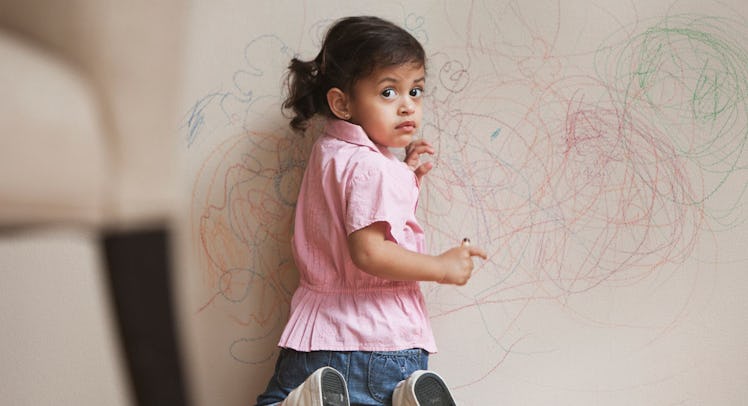Early Warning Signs Of Problem Children Run Deeper Than You’d Think
These are the factors that put “dysregulated” two-year-olds at risk of displaying behavioral problems by age six.

As your two-year-old colors on walls and screams at strangers, you may wonder whether you have a problem child on your hands—or simply a rowdy toddler. Now, researchers have pinpointed the factors that put “dysregulated” two-year-olds at risk of becoming six year olds with behavioral problems. In order to do so, researchers followed 148 preterm newborns until age six, keeping tabs on each family’s financial situation and regularly monitoring the psychological health of both mother and child.
“We found that children born preterm follow three distinct trajectories, or patterns, of behavior problems,” coauthor on the study Emily Gerstein of the University of Missouri St. Louis told Fatherly. “Having a mother with depression symptoms, a child who is more dysregulated, and lower family incomes made a child more likely to be in that at-risk group.”
Since the other factors that tend to lead to behavioral problems—poverty, depression, and premature birth—are difficult to control, the most applicable finding is that “dysregulated” two-year-olds are at greater risk of growing into six-year-olds with severe behavioral problems. In theory, dysregulation is the sort of thing a parent could spot early and intervene with therapy to fix before a real problem develops. The trick, however, is learning to identify these early warning signs. “Dysregulation means that a child has trouble controlling their emotions and behaviors,” Gerstein explains. “We measured it by looking at… how irritable, negative, and impulsive the child was, and how intensely and frequently they had those emotions.”
For parents of two-year-olds, identifying those signs of dysregulation may sound impossible. Doesn’t pretty much every toddler have trouble controlling his or her emotions? Gerstein advises that parents measure their children’s behavior against other children: “In daycare or on the playground, does it seem like their child melts down more often and more intensely?”
Once a parent has identified dysregulation in a two-year-old, Gerstein says there is plenty of hope for heading off long-term behavioral problems—especially if parents seek early intervention. “We can try to intervene early and prevent the behavior problems that may then affect school, learning, friendships and relationships,” she says. “For example, we can try to work with young children on ways to better handle frustration and disappointment.”
One caveat is that this study specifically looked at preterm children, so there’s room to question whether the findings translate to full-term babies. But Gerstein suspects, based on prior work, that her findings apply across the board. “Maternal depression and child dysregulation are generally important factors to look out for in all children, not just those born premature,” she says. This study merely suggests that preterm children “may be even more vulnerable to risk factors like maternal depression, parenting, dysregulation, the home environment,” she says. “Prematurity may act like an added stressor, which makes all other risk factors more important.”
And then there’s the concern that worried parents will misuse this research, seizing every crayon-stained wall as irrefutable evidence their children will be monsters by age six. Gerstein has some down-to-earth advice. “The terrible twos and threes have that name for a reason,” she says. “Our study found that behavior problems naturally spike around that age, and we should expect that for the majority of children. It’s just part of the normal developmental process, as children are learning to explore their world and its boundaries, but are still lacking some of the language and processing skills that would make understanding and being understood easier.”
“The majority of children in our study were doing well, which is really encouraging.”
This article was originally published on